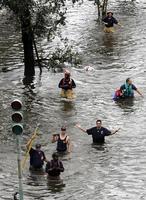
The new
website is done. If you are a history, geography, government or economics teacher out there and want to try it out for your class – just send me an e-mail. If you’re the first to do so, try it out for free.
Why post this on
Right Brain World? If you’re a right brain student, it’s sometimes easier and more interesting to learn through projects. During the playing of
Global Challenge, it's often important to be a big concept thinker. Your vision or understanding of where things are headed could help guide students who do not see things in this way. Left brain students are sure to thrive too, since their keen skills in analysis are necessary to getting many things done in the game. You'll quickly find out how much the two "hemispheres" need one another.
Here’s a quick analysis:
Right brain students will see historical patterns, put together creative plans, help create team logos, theme music, design currency, formulate plots, or interpret the behavior of other players.
Left brain students will enjoy calculating strategies based on per capita incomes, put together spread sheets to keep track of money, points, armies, teams, facts, etc. They will help in providing the much needed order and structure to keep the game moving forward.
The great part about this game, honestly, is that there is something for every type of learner.
If you’re a creative teacher, you’ll be free to integrate the arts. Have your students create theme songs, design team logos or a new look for the classroom itself. If you’re into the idea of integrating technology, then you may want to find creative ways to use Facebook or Twitter, create a class blog or wiki. It’s all up to you. Global Challenge will provide you the overall framework – and you can take it from there.
I hope you will give it a try.




